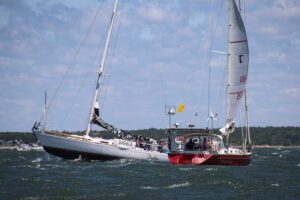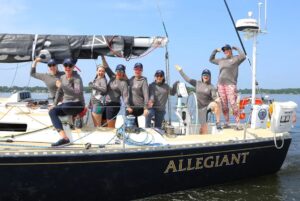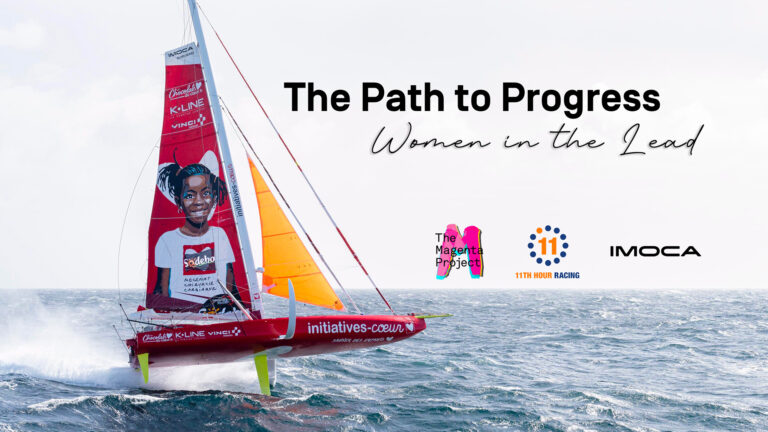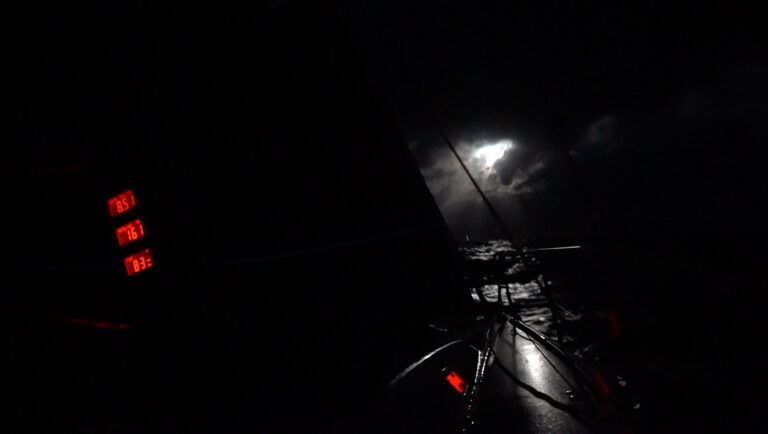Judgment vs. luck, luck vs. judgment. That was the talk when five sailors died in the grounding of the Sydney 38 Low Speed Chase on the Farallon Islands after being overwhelmed by breaking waves—the first fatalities since the 1907 inaugural running of the event.
To the sailors of northern California this is not just a race. It is part of the local DNA, just as the Newport-Ensenada Race has been a part of the DNA of southern California sailing since 1948, which made it, if possible, all the more tragic when four sailors lost their lives in the 2012 Ensenada Race—a first in the history of that event as well—just 15 days after the accident up north. The double whammy stunned the sailing community, coming only 11 months after the two fatalities, under very different circumstances, in the Chicago Yacht Club’s 2011 Race to Mackinac.
At press time, there was no official ruling on what destroyed the Hunter 376 Aegean en route to Ensenada, but it seems the boat was either run down by a ship or (more likely) the crew motored onto the rocks in the night. Aegean was competing in a cruising class that permitted motoring (with a mathematical correction applied to handicapping), and her transponder track showed her moving through light wind at a steady speed straight onto the bricks at North Coronado Island. For the record, skipper Theo Mavromatis had won the division twice. Given the lack of available evidence, there was no point speculating whether the crew had been overcome by carbon monoxide or simply failed to pay attention.
Without doubt, the experienced crew aboard Low Speed Chase was paying attention as they rounded the steep spires of the Farallones 17 miles outside the Golden Gate. This is the edge of the continental shelf. Seas rise dramatically even on a calm day, and this day featured a 20-23 knot northwesterly, intensifying along with the sea state near the islands—a moonscape of raw rock pounded by swells arriving across the full fetch of the North Pacific where they meet an underwater topography of sudden rises and shoals that are perfectly formed for inducing killer waves.
One of the crew’s three survivors, Bryan Chong, described the first wave that broke over the boat as “unlike anything I’ve ever seen outside of big-wave surf videos.” It lifted the boat near vertical, spun it, barrel-rolled it, broke the mast and cleared the deck of safety equipment and five of the eight crew aboard. Those three that stayed on board ultimately survived, though two of them were swept overboard by the next breaker and washed onto the rocks along with the boat.
Sailors were still in mourning when the Coast Guard temporarily suspended any further events in the Gulf of the Farallones. The ensuing consternation subsided once it was clear the Coasties would rely on a US Sailing panel chaired by two-time US Yachtswoman of the Year Sally Honey to study safety procedures and make recommendations. Sally knows the waters and the culture well.
Along with the loss of two sailors in a possibly unsuitable boat that flipped in the 2011 Chicago-Mackinac, American offshore sailors have now suffered three deadly events in quick succession, each unique. Although sailors would never accept a ban on racing around the Farallon Islands, the community did immediately discuss whether to add waypoints some distance off the rocks in deep water. By contrast, with the Coronados being obstacles on a course where choosing a route “inside” or “outside” is a make-or-break decision tactically, there may be no practical “waypoint” remedy.
Discussion regarding Low Speed Chase also focused on the fact that nobody aboard was clipped to the boat, though they all were wearing tethers. Since one survivor rode the boat all the way to the beach, that seems a tempting remedy. But let’s remember that on Lake Michigan, the crew of WingNuts was clipped on, and it was the two who failed to detach who drowned. When it comes to safety at sea, there is no simple bottom line.
Photo by Erik Simonson









